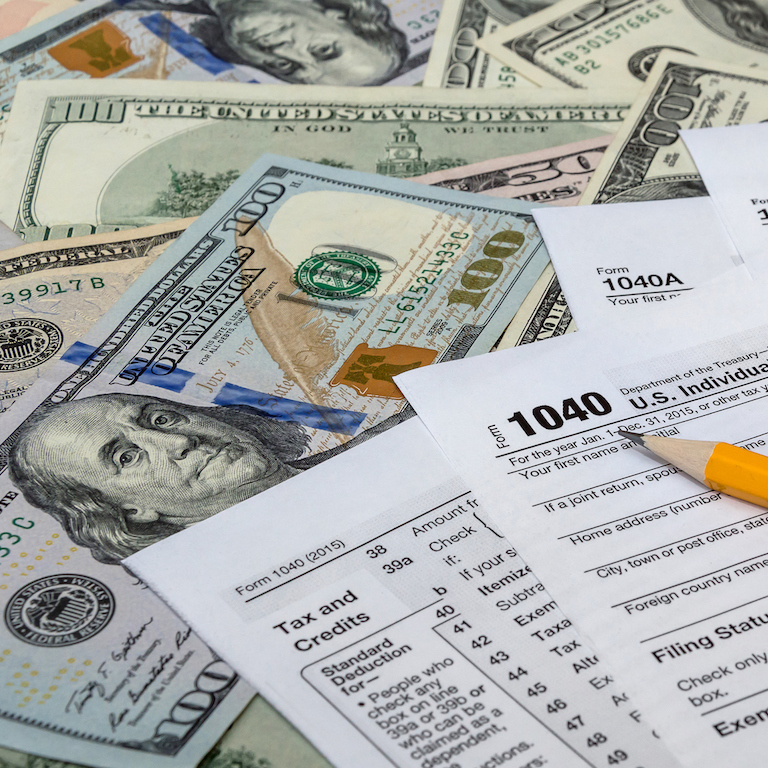Investing
How Long It Likely Will Take for Your IRS Tax Refund to Show Up

Published:
Last Updated:

With the 2018 tax season coming to an end for the original deadline, the mad rush of April 15 (or April 17 this year) is upon us. Millions of Americans end up paying the exact amount owed or end up owing more in taxes than what were calculated. That said, there are also millions of Americans who get tax refunds from either overpaying or from other credits.
One big question to ask about refunds, other than how much it will be (and that depends on each individual’s income and situation), is how long it actually takes the IRS to refund your money.
According to the IRS website, more than nine out of 10 refunds are issued in less than 21 days. It is of course possible that your individual tax return will require a further review that can cause a delay. In some cases, it could be days, but it could take weeks or even longer, depending on how your tax structure looks and how much money is being refunded.
There is also a Where’s My Refund? portion of the IRS site that will give you additional information about the status and timing of an expected tax refund. Then again, you may have to do things the old-fashioned way by picking up the telephone to find out. During tax season your hold times are likely to be very extended, but the IRS site notes:
Our phone and walk-in representatives can research the status of your refund if it’s been 21 days or more since you filed electronically, more than 6 weeks since you mailed your paper return or if Where’s My Refund? directs you to contact us.
You can also start checking the Where’s My Refund? portion of the IRS site to check on the status of your individual return within 24 hours after the IRS received your e-filed personal tax return. If you mailed in a paper return, you can start checking the Where’s My Refund? portion of the site within four weeks of the date you mailed your return to the IRS. The tracker has three stages that will be shown: Return Received, Refund Approved and Refund Sent. The tool also will provide an actual refund date once the IRS has processed the individual tax return and once it has approved a refund.
This part may seem obvious, but how long your refund takes to be available is sped up or slowed down by how you file and how you request to get your refund. If you use the U.S. Postal Service for the whole filing and refund process, Then it will take longer for the IRS to receive your filing, longer to process it since it is paper rather than electronic, and longer for you to receive the actual tax refund check back in the mail once the IRS approves and sends your refund in the mail. They call it snail mail for a reason.
For those who need their tax refund faster, the IRS encourages a direct deposit method of tax refunds. The IRS claims that eight in 10 taxpayers get their refunds faster by using the e-file and direct deposit method. The direct deposit method is even called the fastest and safest way to receive a refund. This refund method is selected by the individual tax filer through the tax software under Form 8888 by typing in the bank account number and the bank’s routing number.
Other issues on your tax filing may delay how long it takes to receive a tax refund. The IRS states that tax returns will take longer to process if the filing has errors or is in incomplete. That seems pretty obvious, but a refund can also be delayed if an individual’s tax filing includes a claim filed for an Earned Income Tax Credit or an Additional Child Tax Credit. And of course, there is the warning from the IRS that a tax refund could be delayed if the tax filing has been unlucky enough to have been affected by identity theft or fraud.
There you have it. If you have a refund coming back to you, there may be as much as a 90% chance or higher that you get your tax refund back in three weeks or so. As for the rest of the population, it all depends.
As a reminder, the more complex a tax filing is, the longer it is likely to take before refund will be issued. And if you are among those who file tax extensions, you already know any tax refund is likely months and months away from coming back to you.
Thank you for reading! Have some feedback for us?
Contact the 24/7 Wall St. editorial team.